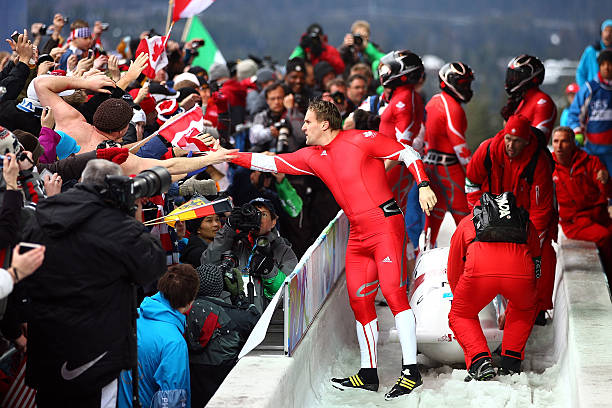Who: Pierre Lueders
Age: 40
Experience: The Edmonton native began his athletic career in track and field, until his cousin introduced him to bobsledding in 1989; for a year, he was a brakeman, sitting behind the driver; in order to experience the incredible speeds from the front of the sled, he trained as a driver with two-man and four-man bobsled teams; he collected 88 medals from the World Cup, plus eight World Championship and two Olympic medals, including gold at the 1998 Nagano Games; he is now a bobsled coach in Calgary, sharing with others what he learned from his impressive career.
– “The guy in the front has the responsibility of driving down the hill and putting teams together. It’s not just about being an athlete; it’s like being a part-time manager. There are many aspects of bobsledding beyond just sliding down a hill.”
-“Nagano was my second Olympics. Many young athletes dream of going to the Olympics and winning a medal, and I was no different. It was a close race – we tied [for the gold] with a team from Italy, which was the first time in history that had happened.”
-“When you’re in the sled, you experience a lot of G-force. If you’re 100 kilograms and you go through a corner where there are four Gs, you’re going to have 400 kilograms of pressure on your body.”
-“There’s a lot of training involved, in the form of lifting weights, running and being conditioned [to help compensate for the force] . Tractor-tire flipping, just to make the body stronger, is also one of the techniques I’ve used to train.”
-“It’s not like a roller coaster, where it feels like your stomach has dropped or you feel light. In bobsledding it’s completely different. When you go past a corner, it feels like someone is sitting on your back. Maybe even two or three people.”
-“It takes a while after a race to calm down, to get back to a normal state of being – there’s a lot of adrenalin surging through your body. Whether it’s Olympics or a World Championship, there’s always a tremendous feeling of satisfaction and euphoria.”
